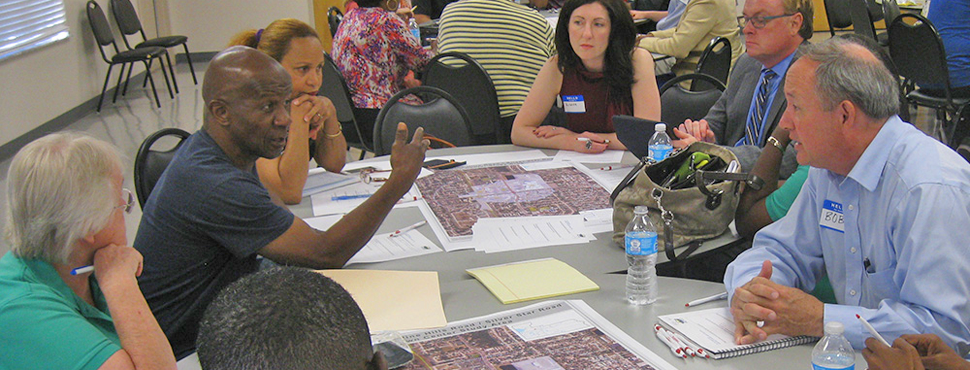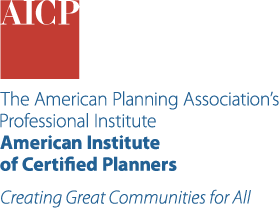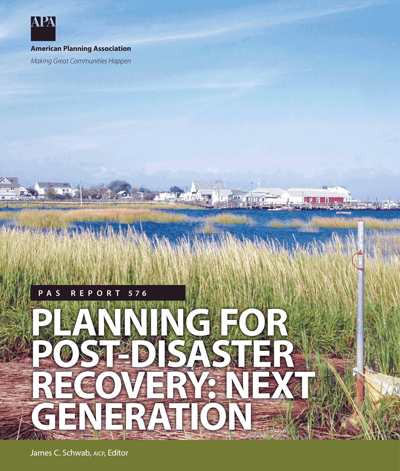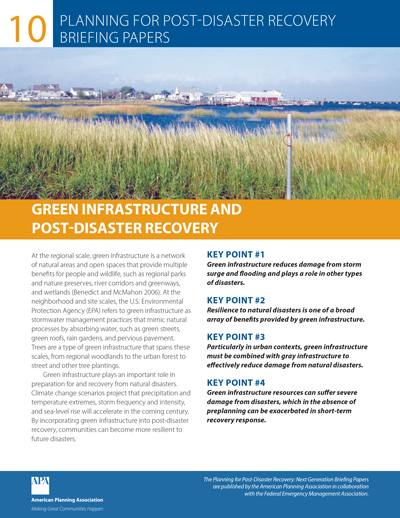Hazards Planning

Research Priorities
The Hazards Planning program focuses its efforts on projects and policies that prioritize hazard mitigation, post-disaster recovery, and climate change adaptation.
The Hazards Planning program advances practices that promote resilience by reducing the impact of natural hazards on communities and regions. Every community is faced with natural and man-made hazards such as floods, wildfires, hurricanes, landslides, extreme temperatures, and more. Proper planning for hazards mitigation, post-disaster recovery, and climate change adaptation enables communities to be prepared for the 21st century.
Through original and applied research, APA's Hazards Planning program identifies practices that protect communities from natural and man-made hazards and educates planners and allied professionals about those practices.
Our mission is to support the development of safe, resilient communities that can minimize their losses from disasters while efficiently utilizing their resources to recover in an improved manner.
Disaster Recovery Guide for Planning Practitioners
APA and Texas A&M University's Hazard Reduction and Recovery Center are developing a planner's guide for post-disaster recovery. This guide will focus on the initial and intermediate recovery phases where planners can bring their expertise to bear on critical post-disaster issues.
Planning Information Exchange Webinars
In cooperation with the Association of State Floodplain Managers, APA is conducting a series of quarterly webinars for practitioners that will include tools, best practices, and strategies on hazard mitigation planning and its connections with recovery planning and preparedness.
Planning for Post-Disaster Recovery: Next Generation
PAS Report 576
APA is committed to the continuing education of planners and their communities on the topic of disaster resiliency; thus, the compilation of up-to-date data, methodology, and policy consideration is a vital component of this goal. We encourage practitioners to review Planning for Post-Disaster Recovery: Next Generation, as well as additional supplemental resources.
Planning for Post-Disaster Recovery Briefing Papers
The project briefing papers may be used alone or alongside the PAS Report above, Planning for Post-Disaster Recovery: Next Generation. These succinct, downloadable PDFs are ideal handouts for meetings with officials and the general public.
Current Projects
Disaster Recovery Guide for Planning Practitioners
APA and Texas A&M University's Hazard Reduction and Recovery Center are developing a planner's guide for post-disaster recovery. This guide will focus on the initial and intermediate recovery phases where planners can bring their expertise to bear on critical post-disaster issues.
Planning Information Exchange
In cooperation with ASFPM, APA will conduct a series of quarterly webinars for practitioners on hazard mitigation planning.
Completed Projects
Coastal Zone Management
Drought Mitigation
Drought Mitigation Planning in a Multi-Hazards Context
Great Lakes Coastal Hazards
Hazardous Tree Management
Incorporating Local Climate Science to Help Communities Plan for Climate Extremes
Innovations in Planning and Public Engagement for Community Resilience
Integrating Hazard Mitigation into Local Planning
Landslide Hazards and Planning
Planning for Post-Disaster Recovery: Next Generation
Planning for Wildfires
Subdivision Design in Flood Hazard Areas
Survey of State Land-Use and Natural Hazards Planning Laws
Resources
Hazard Mitigation and Disaster Recovery Planning Division
APA's Hazard Mitigation and Disaster Recovery Planning Division fosters professional communications on hazards and recovery, and helps build a knowledge base for use by planners.




